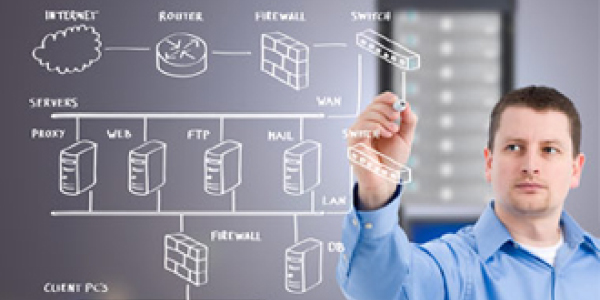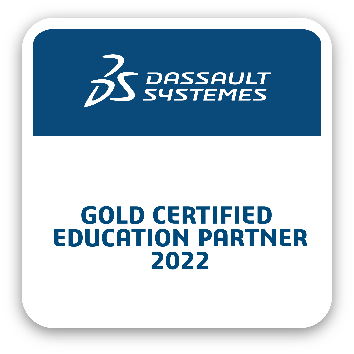For companies that have deployed a PLM or CAD solution, the implementation process and production rollout were probably thoroughly planned, well documented and communicated, and then reviewed for potential process improvements. If you are planning a new software implementation, you wouldn’t think of proceeding without a detailed Statement of Work and plan in place. But what happens after the implementation? How will your business maintain and improve your PLM or CAD environment? Most companies give only the slimmest consideration for maintaining their user expertise and growing the application capability following the initial implementation.
Upon completion of an implementation, you should at minimum have a functional infrastructure, a reliable working environment and enough knowledge to get you started. But almost immediately, unforeseen questions and topics will start to pop up. Where do you go for answers to those questions? There are 3 different strategies for user and administrative community support:
- No support structure
- Internal support center or support group
- External support
Option 1 – No Formalized Support Structure
With no formalized support structure, users and administrators will get creative to answer questions and resolve issues. If you happen to have a power user in your organization, they will likely be the first line of defense. Power users will pass on THEIR best practice knowledge and techniques to others. There are two main drawbacks with this approach. First, your most talented and capable users spend a significant amount of their time providing support. Second, many users, even power users, develop their own best practices which may or may not be ideal for the company as a whole.

Another method for finding answers is of course the internet. Many blogs, wikis, videos and other resources exist; however, they are often not well organized or validated, and finding or testing these ideas can take considerable time and effort. Internet search can be an effective way to address a specific error message, but rarely provides a best practice procedure.
And the third technique is the trial-and-error method. This is typically a time-consuming, morale-crushing process as the user becomes hyper-focused on the specific issue at hand while reducing the time available to look at the larger task they are trying to perform.
Option 2 – Develop or Expand an Internal Support Structure
If you have a support center in place, you may already have the necessary core infrastructure. Some modifications may be required to support expansion for a new application. If you don’t currently have a support center, you will need to consider the associated costs:
- Hardware/software infrastructure to support a call tracking database
- Development of business processes such as call creation, escalation and tracking
- Dedicated resource assignment, initial and update training plans

Internal support provides benefits over no formalized support structure at all, but it does put an additional human resources and IT burden on the organization to maintain the environment. And, internal support resources are often familiar with the current version of the software applications, but also need update training as upgrades are planned.
Option 3 – Use a Support Provider
An external support provider can offer many benefits:
- Your users can access the environment immediately with no need to develop an additional implementation and roll out plan
- Access support via internet chat, email or phone depending on preference
- Live remote desktop assistance to help immediately see and diagnose many problems
- All calls are logged, tracked and available online
- Online knowledge base available 24/7, containing organized, searchable and focused solutions to reduce “self-diagnosis” time
- Support center minimum response time guarantees
The ROI for an external support center can be calculated across the business as your users – end users, administrators, and IT support – become more efficient and save time spent resolving minor issues.

Why Choose Inceptra as Your Support Provider?
Why choose Inceptra over other options to support your Dassault Systèmes software users:
- Inceptra has more Dassault Systèmes (DS) Certified Engineers than any other DS partner in North America
- We have dedicated Level 1 support resources available from 8 am to 8 pm ET, Monday to Friday – you will never be dropped into a consultant’s voicemail.
- Level 1 support captures, diagnoses and resolves most issues – in addition, it maintains the queue for any Level 2 or Level 3 (DS development) support calls
- Our large, diverse Level 2 support resources include specialists in every area: CATIA V5, 3DEXPERIENCE, Kinematics, Composites, Electrical, Surfacing, Design, Analysis, DELMIA Machining, Apriso, ENOVIA SMARTEAM, ENOVIA 3DEXPERIENCE, etc.
- Real-world experience and more than just “what does this button do?” support – the Inceptra ADVANTAGE Support team frequently offers additional methods/techniques suggestions and best practice recommendations based on our experiences with customers across North America
- “Unlimited use” model allows for Inceptra ADVANTAGE Support to be used as an extension of your engineering/IT departments
- Our extensive archive of webinars and newsletters containing product overviews, best practices and tips & tricks sessions
- Inceptra’s Full Circle Support offer provides additional value to your organization with Training and Skill Gap Assessments
If you’re interested in learning more about Inceptra ADVANTAGE Support Plus, please click HERE.






